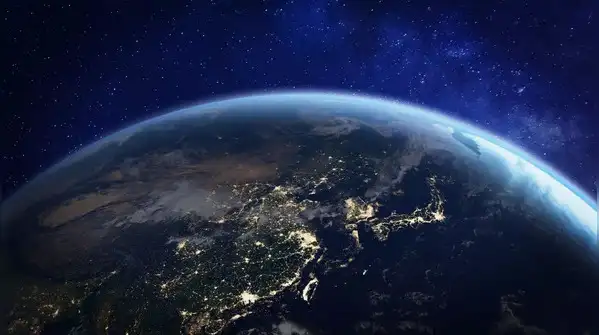
Imagine a world where your day lasts an extra hour—25 hours instead of 24. It might sound like a dream for those craving more time for work, leisure, or sleep, but science suggests this could become a reality far in the future. The length of Earth’s day is gradually increasing, and while the change is imperceptible in our lifetime, it’s a fascinating glimpse into our planet’s dynamic relationship with the cosmos. Let’s dive into why Earth’s days are getting longer, what this means for life, and how you can explore this phenomenon further.
The Science Behind the Slowdown
Earth’s rotation, which defines the length of a day, isn’t constant. Over millions of years, our planet’s spin is slowing down, primarily due to the gravitational tug-of-war between Earth and the Moon. This process, called tidal friction, is the key driver. As the Moon orbits Earth, its gravitational pull creates ocean tides. These tides generate friction against the ocean floor, like a brake that gradually slows Earth’s rotation. According to NASA, this interaction causes Earth’s day to lengthen by about 1.7 milliseconds per century—a tiny amount, but it adds up over geological time.
In perspective, 620 million years ago, a day on Earth lasted about 21.9 hours, as evidenced by ancient geological records like tidal rhythmites (layered sediments that record tidal patterns). Scientists estimate that in roughly 200 million years, Earth’s day could stretch to 25 hours. This isn’t just a quirky fact—it’s a testament to how interconnected our planet is with the Moon and the broader solar system.
Why Does This Happen?
The Moon’s gravity doesn’t just pull on Earth’s oceans; it creates a tidal bulge that Earth’s rotation carries slightly ahead of the Moon’s orbit. This misalignment causes the Moon to exert a gravitational torque, slowing Earth’s spin. In return, the Moon gains angular momentum and slowly drifts farther away from Earth—about 3.8 centimetres per year, as measured by laser-ranging experiments using reflectors left on the Moon by Apollo missions. This dance between Earth and the Moon is a delicate balance, ensuring that the Moon’s orbit expands as Earth’s rotation slows.
Other factors also influence Earth’s rotation, though to a lesser extent:
- Atmospheric effects: Seasonal changes in air pressure and wind patterns, like El Niño, can subtly alter Earth’s spin.
- Geological events: Earthquakes and glacial melting redistribute Earth’s mass, slightly tweaking rotation speed.
- Solar tides: The Sun’s gravity also plays a role, though it’s less significant than the Moon’s.
What Would a 25-Hour Day Mean for Life?
A longer day in the distant future could profoundly reshape life on Earth. Here are some potential impacts:
- Climate and weather: Longer days could mean extended periods of sunlight and darkness, potentially altering temperature patterns and weather systems. Plants and animals adapted to current day-night cycles might need to evolve.
- Human schedules: An extra hour could give us more flexibility for work, rest, or play. Imagine an additional hour for your morning coffee or a longer evening to unwind!
- Technology adjustments: Our clocks, calendars, and timekeeping systems need updates. Leap seconds, already used to sync atomic clocks with Earth’s rotation, might become more frequent.
- Ecosystems: Species reliant on circadian rhythms, like migratory birds or nocturnal animals, could face challenges adapting to a new rhythm.
While these changes won’t affect us directly, they spark curiosity about how life evolves in response to a changing planet. For now, the gradual lengthening of days is a slow burn—nothing you’ll notice in your lifetime, but a fascinating topic to ponder.
Engaging with the Science
Want to explore this topic further? Here are some practical ways to dive deeper:
- Track Earth’s rotation: Websites like timeanddate.com offer tools to understand timekeeping and Earth’s rotation.
- Learn about tidal forces: NASA’s Space Place has kid-friendly explanations of tides and gravity that are great for all ages.
- Follow lunar missions: The Moon’s role in this process is key. Check out updates on NASA’s Artemis program to learn about our return to the Moon.
- Explore geological records: Websites like ScienceDaily often cover studies on ancient Earth, including how days have changed over time.
- Citizen science: Platforms like Zooniverse let you contribute to fundamental scientific research, including projects related to Earth’s history.
- Stargaze: Apps like Stellarium can help you visualize the Moon’s orbit and its gravitational dance with Earth.
Fun Fact: Earth’s Day Was Once Much Shorter
Hundreds of millions of years ago, Earth spun so fast that a day lasted less than 22 hours. Dinosaurs experienced shorter days than we do! Fossils and ancient rocks, like those studied by researchers at LiveScience, reveal how Earth’s rotation has evolved. This reminds us that our planet is a dynamic system, constantly shaped by cosmic forces.
Looking Ahead
The prospect of a 25-hour day is a window into Earth’s long-term evolution. While millions of years away, it reminds us how interconnected our planet is with the Moon, Sun, and beyond. So, next time you wish for “just one more hour” in your day, know that the universe might eventually grant that wish—just not in our lifetime!
For more on this topic, check out these resources:
- National Geographic for articles on Earth’s changing dynamics.
- BBC Science for engaging stories on planetary science.
- USGS for insights into geological records and Earth’s history.
What do you think about a 25-hour day? Would you use the extra hour to sleep, work, or explore the stars? Let’s keep the conversation going!